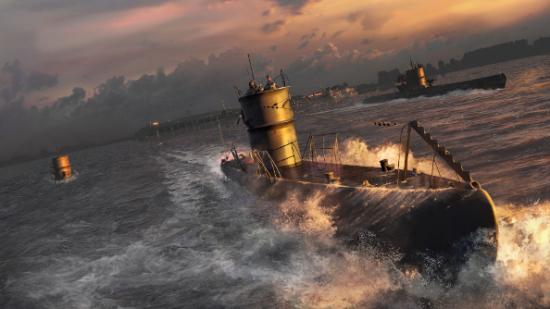Floating in the ocean, silently stalking freighters and destroyers, crammed into a tube of creaking metal with loads of sweaty chaps – this is the life of a submariner in Silent Hunter Online, the latest free-to-play browser game from Ubisoft Blue Byte. It’s a hard life, mostly spent getting to places very slowly, punctuated by the occasional explosion or tense game of hide and seek.
As I type this very review I’m actually playing Silent Hunter in my browser. I’m in the middle of a mission, which one might assume is the very worst time to type a review, but it is in fact the best time. I’ve also managed to devour an Iain M Banks novel, get my CPS up to 50 million 60 million in Cookie Clicker and set up my new printer.
If I’d known how much work I’d get done, I would have joined the navy years ago. Unfortunately, I was actually hoping to spend more of the game playing it, primarily because I’ve actually been enjoying the moments where I’m not just waiting for something to happen.
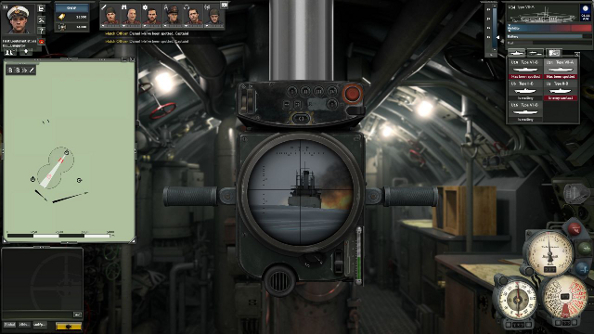
So, you’ve always wanted to be a German U-boat captain during the Second World War? Silent Hunter Online is hoping to scratch that itch – though you really should have sought treatment for it by playing the other Silent Hunters, 1 to 5, before now. The absence of a number in this instalment should be enough to alert you that this is not really a sequel, and “Online” should tell you even more.
This is the basic Silent Hunter formula of blowing up and spying on Allied vessels while commanding a U-boat transposed to a flash-based, F2P, online romp, and it suffers because of all three of those things. Even when compared to the bug-riddled mess of Silent Hunter 5, this is a step backwards for the franchise.
If you thought real submarines were claustrophobic, just wait until you find yourself stuck staring at an almost static screen for hours on end, unable to look away unless you flee to the bridge of your surfaced sub or browse a map. There’s absolutely no sense that you’re on a submarine at all: you can’t walk around it, you can’t interact with the various stations and your officers are merely character portraits that represent your powers of delegation.
The one spark of life on this ugly, jumbled screen – drowning in moveable UI windows and buttons – is the periscope, your window into the world. Through this you can see the gently bobbing ocean and occasionally a sunset. Sometimes you can sort of see the tops of other ships. While a nice change from the monotony of the command screen, it’s hard to really get excited about a wee hole displaying an unrefined approximation of what the sea looks like.
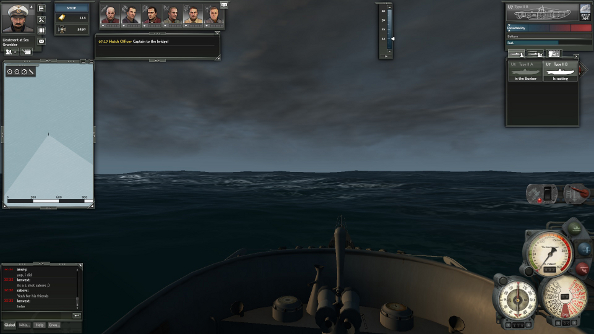
Credit where credit’s due – I knew exactly what every button, every window and ever command did after the exhaustive tutorial and first couple of missions. Silent Hunter is not an overly complex game, but the UI and commands can be daunting at first, and the first 30 minutes of the game really does explain almost everything.
After going back to school, I was raring to jump into the sandbox of the Second World War, bursting with fond memories of close-calls and exciting encounters in previous iterations of the series. Then I spent the next few hours wondering where the war went.
Silent Hunter is split into big operations – instead of the open world fans of the franchise will be used to – which are further split into big missions, and they themselves are split into small objectives. At first, all you are doing is following around British freighters. You either blow them up, or just collect intel on them. Such missions all follow the same pattern:
You jump into the mission and have to find the vessels… actually, let’s go back a bit. You have to travel to the mission first, which can take up to 24 hours in real time (unless you want to spend Time Compression Points, which are limited, but do eventually regenerate after a day), then you can jump into the mission and try to find the vessels.
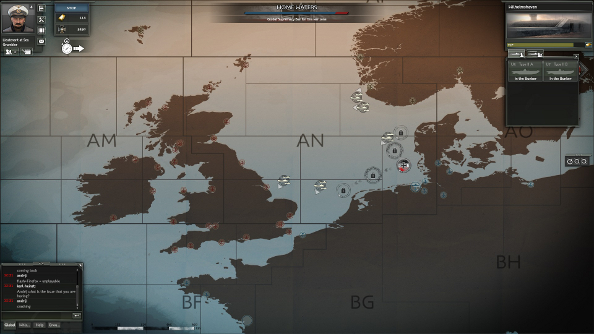
The direction of said vessels might already be known, and if it’s not you can order your sonar officer to search for them. You spend an age catching up to them, get close enough so that your watch officer can see them, target each individual vessel until you find your mission objective, and either blow it up or report the ship. And repeat. For hours.
Attacking defenseless ships or, worse, looking at defenseless ships is not a whole lot of fun, I confess. Beyond changing speed, direction and depth, there’s not very much for a captain to do. During an engagement, it’s an engrossing role, rapidly crash diving to avoid enemy bombers, tweaking the sub’s speed to remain stealthy, perfectly positioning the underwater killing machine to strike at a foe’s broadside – but most of the time it just involves slowly chasing distant ships.
Getting into scraps with enemies that can actually fight back does offer up quite a bit of entertainment, once you’ve actually reached them. Weaving in and out of their field of view, going into silent running mode to avoid detection, and then rising just at the right second to launch a salvo at an unsuspecting, and heavily armed, destroyer before slinking off is tense and rewarding. But it remains hard to get past the fact that you’re staring at a screen that rarely changes, delegating orders.
The officers are the ones with the best jobs. They get to revel in the nitty gritty, calculating routes and torpedo paths, gathering intel, they probably even get bunks… I never got a bunk. I did get to click the big red button that launches the torpedos, though, so it’s not all bad. It’s a shame, then, that Blue Byte decided to throw damage simulation out the porthole.
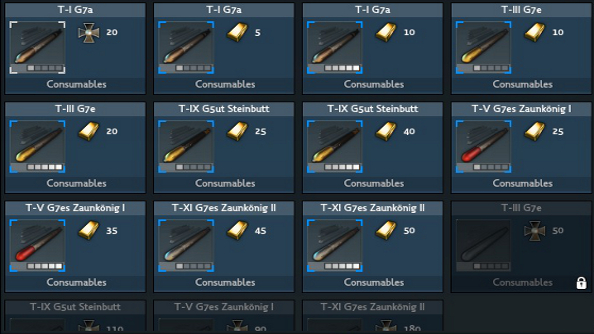
One would expect a damaged vessel to show some signs of actual damage, and not just fire. Ships struck by a torpedo certainly catch fire quickly, but that doesn’t seem to have any effect on them whatsoever. Magically the fire doesn’t seem to spread, either. Absent, too, is the horror of a slowly sinking ship, its men desperately trying to halt its inevitable retreat into the depths of the sea. An enemy ship is either destroyed or not destroyed, and for it to be the former it must have 50 percent of its damage boxes destroyed. The damage model is remarkably out of place in what is a simulation, and I cynically cannot help but wonder if it’s designed with getting people to dole out more money for torpedos.
Ah yes, the specter of F2P. Silent Hunter’s freemium model certainly isn’t as unappealing as Blue Byte’s other browser game, Anno Online. I’ve been playing it on my own account, not a press one, and I’ve not had to spend a penny to progress. It’s definitely slower going because of my thriftiness, however. There are plenty of upgrades for my three subs that I can’t afford and will take ages for me to buy with currency earned in game, and all the best stuff costs gold, which can only be earned in tiny amounts if you’re not willing to drop hard earned cash on a hoard.
After becoming increasingly bored by the single-player portion of the game, tired of repeating the same missions over and over again with short breaks at the dock buying new equipment or upgrading my crew, I decided to faff around in multiplayer – I mean, it is an online game afterall.
Of course, I needed to jump through a hoop first. You can only make a wolfpack (a multiplayer party) with people in your friends list. This isn’t an MMO, so there’s no bumping into other players, but it seems inconceivable that one can’t simply click on a person in chat or search for them and then just join a group. Sure, it’s just one extra step, but it’s so completely unnecessary.
Once you’ve made some what will surely be life-long chums, you can do the same missions that you’ve been doing in single-player. There’s not much to say beyond that. It’s the same game with more people. It’s a bit more scintillating with human allies, what with new tactics opening up, but it remains as slow and automated as it does solo.
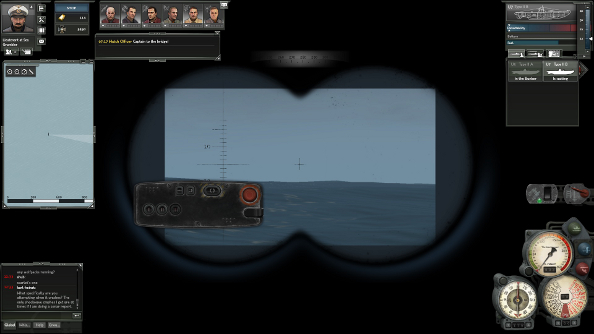
Being able to team up with others certainly isn’t unwelcome, even if it adds little, but those that prefer their Silent Hunter experience as a solitary affair, unspoiled by fellow man, are out of luck. You can certainly avoid any and all human interaction, but there’s no way to stop the online world seeping in like water through the cracks in a sub’s hull.
This is all thanks to the dynamic campaign. Despite the fact that you can play the entire game solo, the game world itself is affected by the actions of all the people you never see. Say you’ve been working hard, doing mission after mission, getting ever closer to the final scenario that will launch you into more challenging, brand new conflicts. You’ve done everything you were meant to do, and you’re ready to move one, but hold on a second – you can’t progress.
If the server hasn’t accumulated enough Victory Points by completing missions, then further campaigns are locked for every single player. The game manual makes it clear as day: individual progress is subordinate to global progress. With the focus being Victory Points instead of natural progression, Silent Hunter has the sort of grind that even most modern MMOs have done away with, yet lacks the giant world where everyone really is playing together.
I find myself really wondering who the game is for. It can’t be for the existing players, since it subtracts more than it adds, and I can’t see the plodding pace, unrelenting tedium and prolonged periods where there’s nothing to do appealing to the crowd that just want a browser game to jump into for a quick 15 minutes.
Silent Hunter Online, much like Anno Online, fails entirely to create appealing reasons why anyone would play this instead of the core series. It’s free, I guess, but the money spent on any of the earlier games buys you more depth, a more realistic simulation and your experience won’t be subservient to that of other players.
